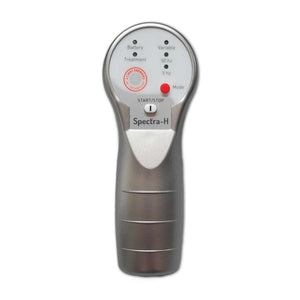
Laser Therapy For Dogs - Complete Guidebook By Holistic Vet
Cold laser therapy is one of the most effective healing modalities for dogs that I use as a holistic veterinarian. It has a wide spectrum of uses, is extremely safe, and helps to control pain without medications. I love teaching pet parents about all the benefits that cold laser therapy has for dogs and also for the whole family.
We can apply this method of healing to all kinds of conditions across the spectrum- acute and chronic, pets that are young and those that are old, dogs that are small and those that are large, used right after surgery or sometimes as a non-surgical alternative.
Laser therapy is non-invasive, safe, non-painful, easy to perform, and affordable. There are little to no side effects and this matches up perfectly with in-home treatments. The cold laser speeds up healing, reduces inflammation, and controls pain.
In this article, I’m going to go over all of the information you need to determine if laser therapy would be a good choice for your dog. I’ll go over what it is, how it works, health conditions that respond well to treatments, how to administer cold laser therapy, what to expect during and after the treatment, and more. I’ll also show you which laser is best for your dog and depending on their condition as well as the expected cost.
The following information is a summary and review based on Dr. Candy’s professional experience and recommendations. Any summary or statement has not been provided nor influenced by the manufacturer.
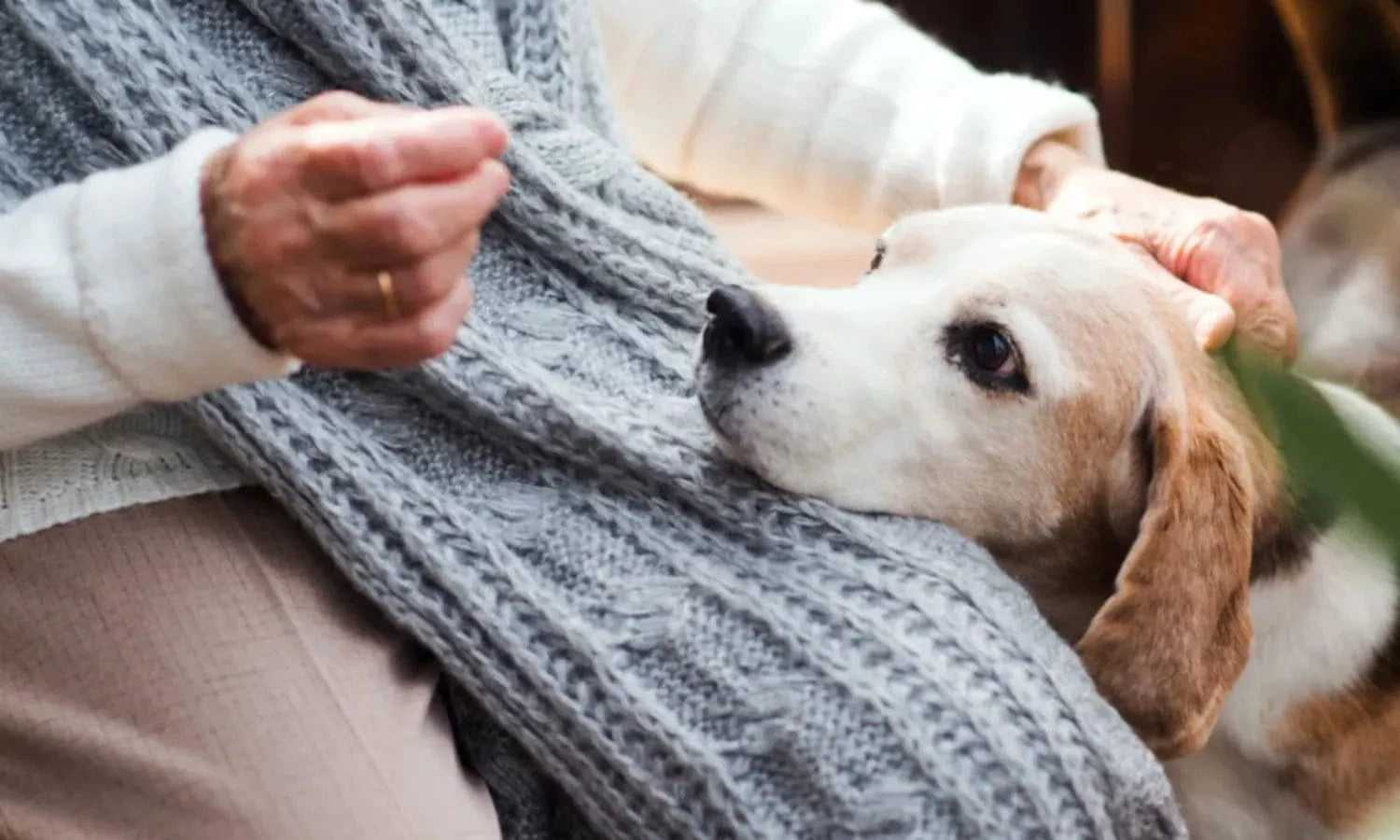
What Is Cold Laser Therapy For Dogs?
“Laser” therapy is the process of using light to stimulate healing in the body. Cold laser is also called low-level laser, LLLT, infrared light therapy, therapeutic laser, or red light therapy.
Low-level laser therapy uses light waves to penetrate your dog’s body in order to stimulate healing. Low level laser uses energetic waves across the visible red light, near-infrared, and far-infrared spectrum.
The term "cold" or sometimes "soft", when describing the light therapy, is in regards to the power of the light beam and the low focus or concentration of the laser.
To learn more about the specific definitions or differences check out:
- What is the Difference Between Cold Laser and Red Light Therapy?
- Laser Therapy Terminology & Glossary
Is Cold Laser Therapy Safe for Dogs?
Sometimes, when we think about lasers, we think about super powerful tiny beams of light that burn or cut things. Low-level lasers don’t have that extreme power level, nor small focus. The cold laser devices that I use and recommend spread the light over an area of a square inch or more.
Low-level lasers do not hurt your dog and they do not get hot.
To read more about pet safety check out:
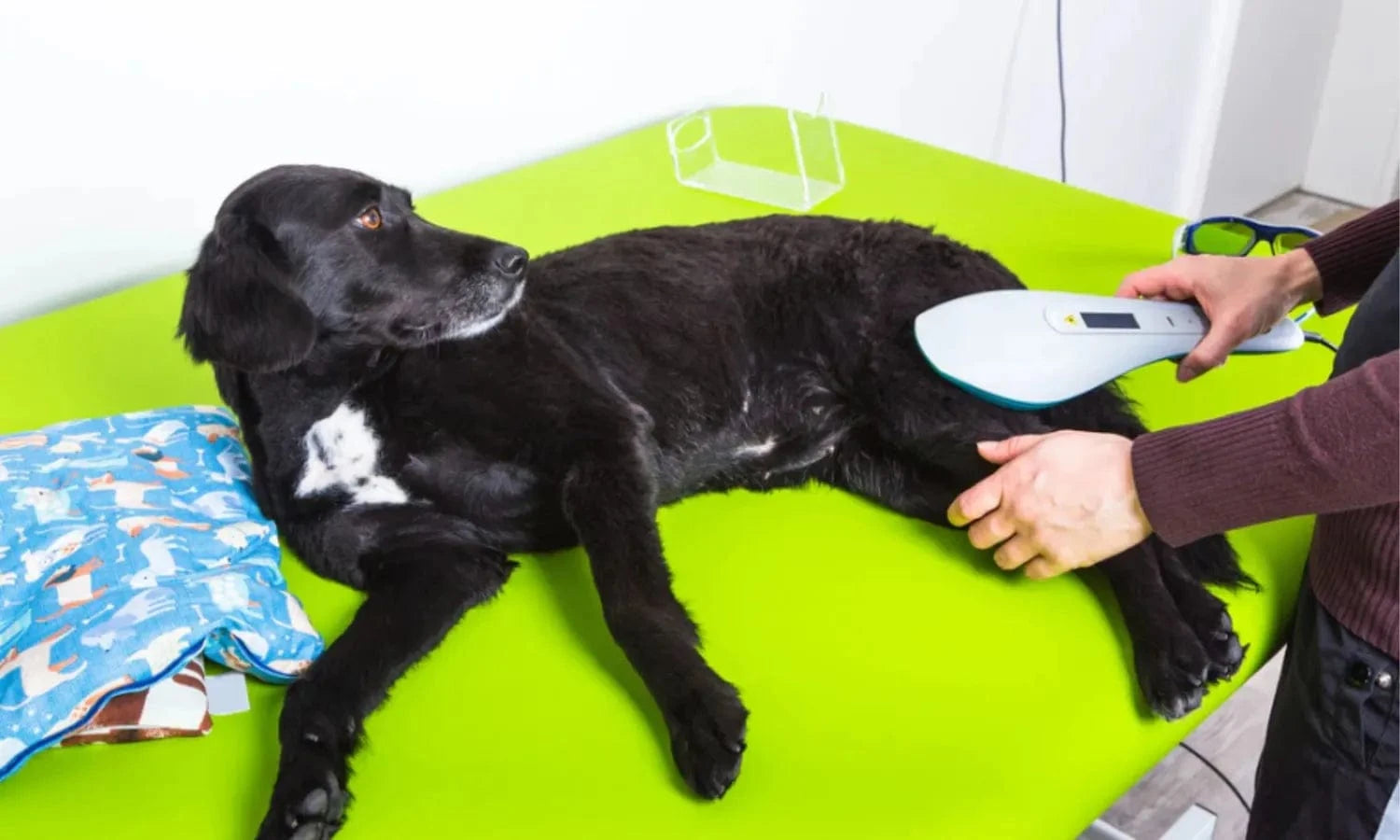
How Does Laser Therapy Work?
Cold lasers heal us and our pets in four important ways:
- Increase blood flow to the treatment area - which brings in fresh oxygen and nutrients
- Removes inflammation, bruising, and lactic acid from the damaged tissue
- Energizes the cells to repair and regenerate
- Relieves pain by stimulating the release of endorphins
Common Health Conditions In Dogs That Can Be Treated With Cold Laser Therapy
| Arthritis | Hip Dysplasia |
| FHO (Femoral Head Osteotomy) | Spay/Neuter Incisions |
| Ear Infections | Periodontal Disease |
| Lameness | Ataxia/Vestibular Loss of Balance |
| ACL, MCL, CCL knee injuries | Laryngeal Paralysis |
| Hot Spots | Hair Loss |
| Fractures | Pulled Muscles |
| Athletic Injuries | Burns |
| Trauma Injuries | Demodectic Mange Mites |
| Porcupine Encounters | Broken Toe Nails |
| Skin Infections | Anal Gland Problems |
| Vaccine Reactions | Neck Pain |
| Joint Ligament Tears | Suture Reactions |
| Back Pain / Injury | IVDD (Intervertebral Disk Disease) |
| Tendon Injuries / Tendonitis | Allergic Dermatitis |
| Antibiotic Resistant Infections | Acral Lick Granulomas |
Where Is The Best Place for Your Dog’s Laser Therapy Treatment To Occur?
All of my experience with therapeutic laser in pets has proven that dogs have far better results when the laser treatments are administered at home.
Veterinary clinics are stressful and scary places for most pups. The physical stress response directly counteracts the healing process. This frequently displayed state of "fight or flight" overrides the principles of healing.
In your dog, stress changes:
- Blood flow
- Heart rate
- Oxygen levels
- Nutrient absorption
- Waste product excretion
- Immune response and much more
Using the correct device in your home environment can exponentially improve healing results. The opportunity to do treatments every day greatly increases the speed of healing. This is compared to the rate of healing when you have to go into a clinic, or only receive a treatment twice a week.
A little later in this article, I will show you which cold laser device will be the best for your family, how to use it and how much it may cost.
Does Cold Laser Therapy Hurt My Dog? What Does It Feel Like For Pets?
When using a high quality cold laser, your dog will not feel any pain, nor any heat. Most people describe that the first minute of a treatment feels like your hairs are standing on end. If pet parents are unsure about the feeling of a weird blinking light that has the word "laser" in its name, I encourage them to try it on themselves. Just apply the therapeutic laser over your arm for a few seconds. Families will discover that the device may have a slight tingle, but it does not hurt.
Does Your Dog Need To Wear Special Goggles During The Laser Treatment?
Safety and eye protection is an important topic for your whole family. If you are using one of the lasers that I recommend, your dog does not have to wear laser filtering glasses or goggles.
I use medical therapeutic lasers categorized as Class 2 or Class 1 laser devices. These lower power lasers do not require eye protection for you or your pets. The more powerful and more risky lasers in Class 3 and Class 4 do require the use of special light wave filtering goggles to be worn by your dog throughout the whole treatment.
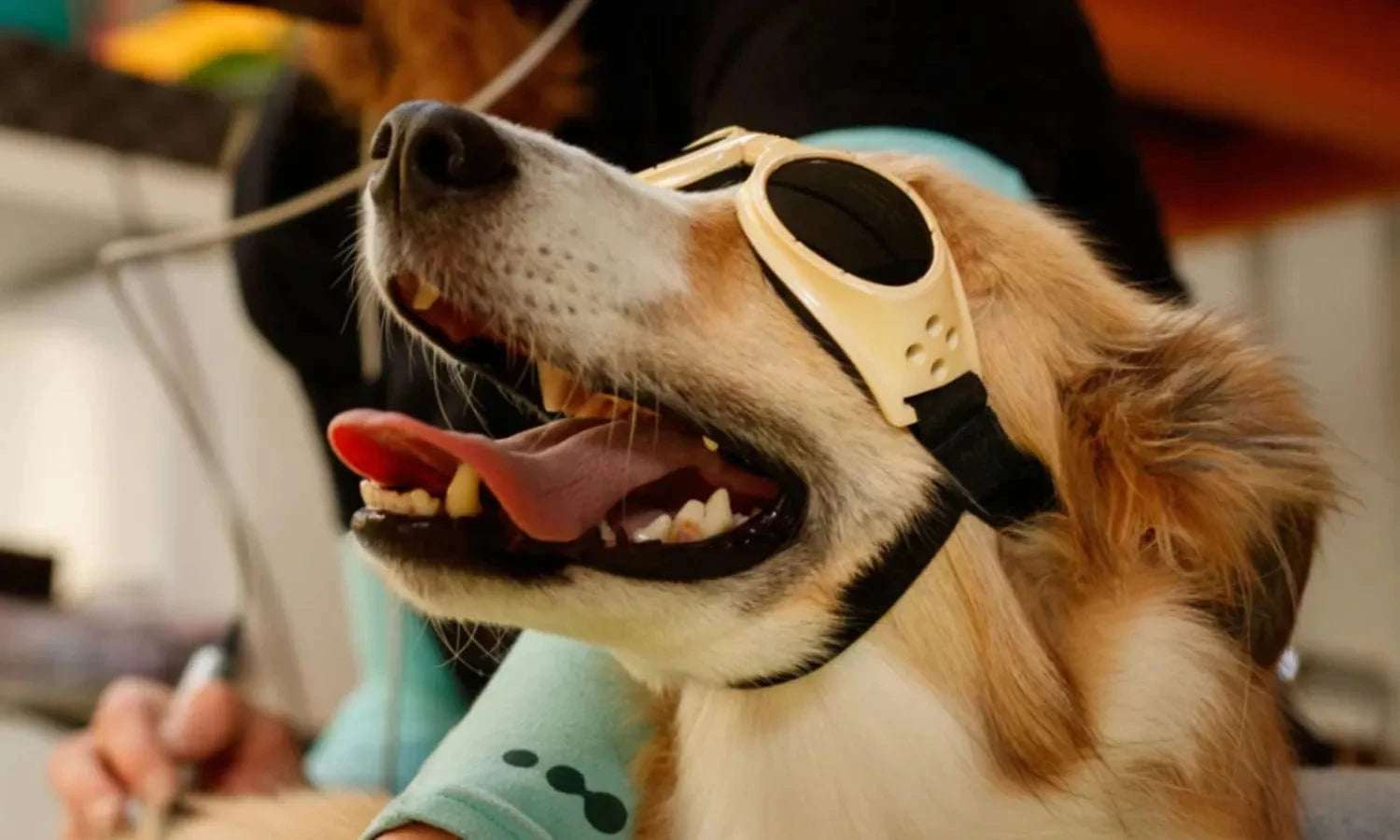
| Class of Laser | Eye Protection Required? |
| Class 1 | NO |
| Class 2 | NO |
| Class 3a | YES |
| Class 3b | YES |
| Class 4 | YES |
However, whenever using any type of light or laser, I remind my clients and their family ( especially little kids ) to never point the light directly into the eyes. Try not to look at or stare at the bulb of the device during the treatment. Also, protect your dog by not allowing them to look at the cold laser. Alternatively, you can use some sort of barrier, like a thick towel or piece of cardboard, between your dog and the low-level laser.
Any bright light can hurt your eyes. Even small devices like flashlights or laser pointers can cause you to see spots or permanently damage your vision.
CAUTION: Never shine a laser directly into your or your pet’s eyes.
Dr. Candy's PRO TIP: As you can probably guess, most dogs will not tolerate wearing glasses or goggles. (I tried, my dog hated them and would just squirm around on the floor.) So I say, instead of spending $40 bucks for dog goggles and wrestling them - put that $40.00 towards a yummy distracting treat or stuffing a kong-type toy such as this one, with a healthy treat. The treat will keep their attention and they won’t look back at the laser.
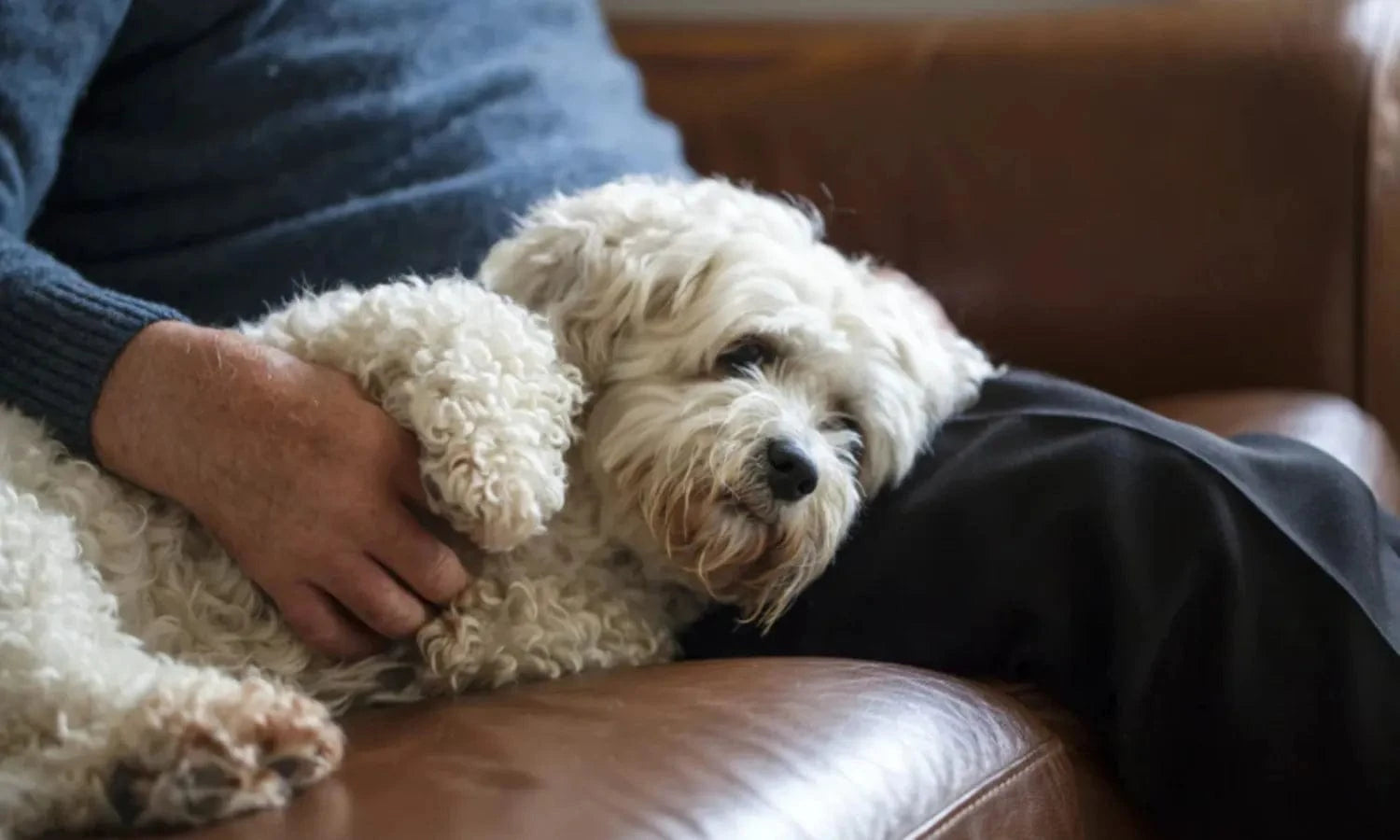
How Long Does A Typical Laser Treatment Take For Your Dog?
An average treatment for dogs takes 5 - 15 minutes. In specific healing protocols, I will guide you on time, duration, and frequency for your pet’s condition.
How Often Should Your Dog Receive A Laser Treatment?
When we are in the first stages of healing, it is best if your dog gets a laser treatment every day. Over the years, I have experimented with the frequency of treatments. My experience has clearly shown the best results when the treatment is applied once a day.
How Long Will It Take To See Results From These Laser Treatments?
Most families will see positive results within the first treatment. The laser has multiple pathways of healing, but reducing pain may be the quickest and most obvious result. The energy waves from the low-level laser stimulates the release of endorphins in your dog. Endorphins are the “feel good” and pain relief chemicals naturally produced in the body.
This result is usually noticed in dogs near the 2-3 minute mark during the laser treatment. Pain relief can be displayed in all kinds of ways.
Most common signs of pain relief in dogs includes but is not limited to:
- Lying down
- Yawning
- Lowering or laying down head
- Closing eyes
- Smooth and relaxed breathing patterns
- Disappearance of little twitches or shivers
Every pet is different in how they display or hide how they feel. However, imagine watching the pain and stress just melt away from your dog. You are making them feel better quickly while at the same time restoring health. Long-term restoration of health strengthens your dog’s body so they can enjoy a great quality of life by your side for many years to come.
Are There Any Side Effects Of Laser Therapy In Dogs?
If you use the high quality low-level lasers that I use and recommend, there is little to no risk of side effects. High-powered lasers ( Class 3 and Class 4 ) carry the risk of side effects like burning skin, burning hair coat, extreme pain, and scarring. That’s one reason why I don’t recommend Class 3 or 4 lasers.
Lower strength lasers, like those in Class 2, are powerful enough to assist healing, but do not carry the risk of painful side effects.
Dr. Candy's PRO TIP: Many dogs just want to know what the laser is. By taking 15 seconds to allow your pup to sniff the device, you can eliminate a lot of anxiety.
→ With the laser off, just give your dog a few seconds to see that it will not hurt them.
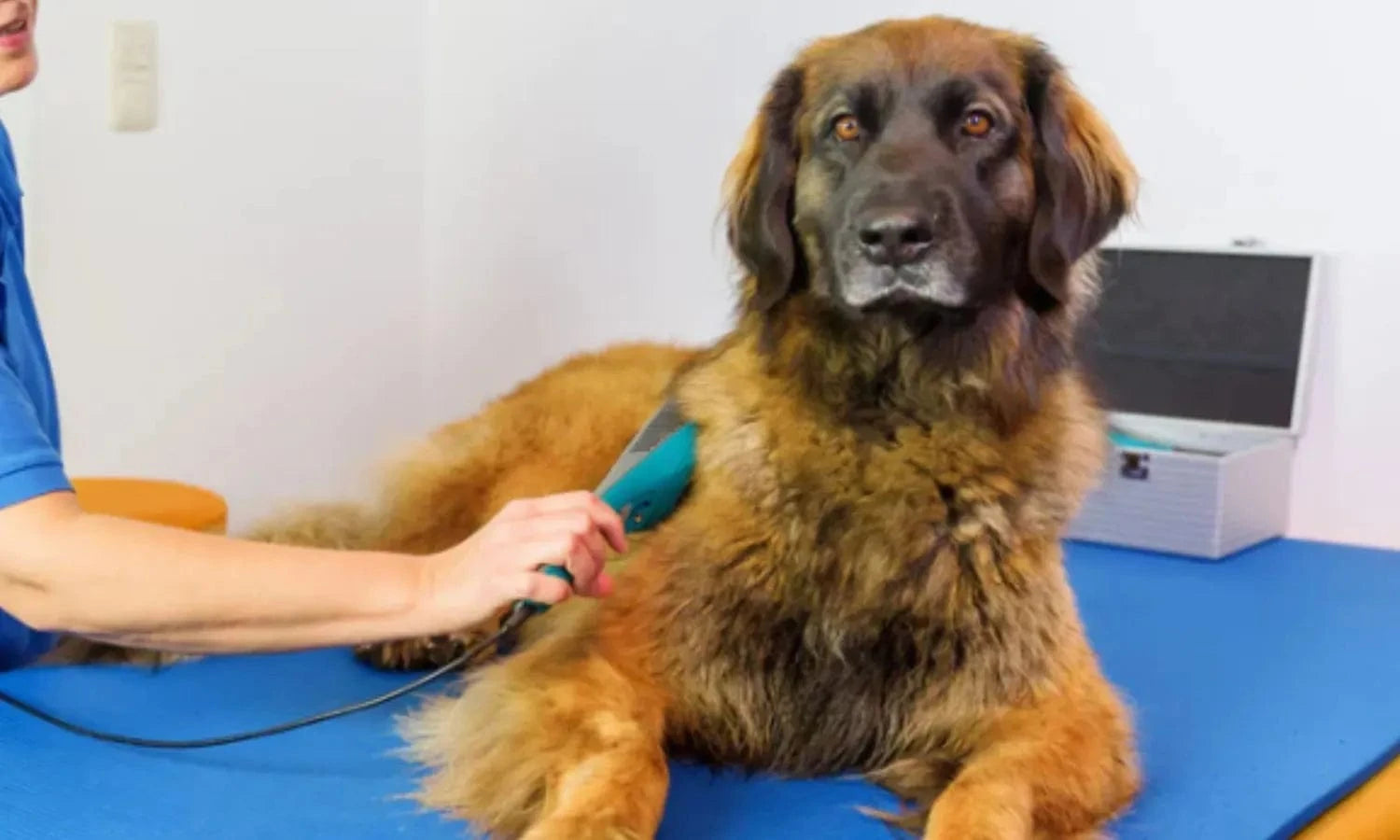
The Case Of A Pet With Extreme Pain Or Nerve Sensitivity
Occasionally, I see a patient that is too sensitive to a direct laser treatment initially. I’ve only come across this twice in 8 years of practice of using medical laser technology.
One was a giant breed dog in extreme, overwhelming pain from a back injury. His pain threshold couldn’t even handle light petting so we had to control his sensation of pain with medications. We also worked on balancing stress hormones and decreasing his anxiety. We administered these supportive therapies for 2 weeks before reintroducing cold laser therapy.
If your dog seems too painful or too sensitive for laser treatments, there are a few options to try:
- Reduce your dog’s pain with full spectrum CBD ( cannabinoids ).
- Reduce your dog’s pain with modern pain medications.
- Reduce the state of anxiety by balancing adrenal stress hormones.
- “Desensitize” your dog’s nerves by starting around the neck and spinal cord for the first 2-3 minutes. This action allows for time for those natural endorphins to be released.
- Introduce the laser device in small incremental steps with positive rewards
* Be careful with over the counter pain medications. I do not recommend giving any medication to your dog without guidance from your veterinarian
When Laser Therapy is NOT Recommended
While discussing possible side effects, I’ll refer back to another article I wrote where I outlined seven contraindications for laser therapy. These are situations where cold laser therapy should NOT be used. General topics include thyroid glands, eyes, benign tumors, pregnancy, seizures, malignant cancers, and tattoos.
The most common scenario where a cold laser should not be used is cancer. Whenever there is possible cancer, there is a potential side effect. A side effect displayed through cancer is the possibility of “boosting the health of the tumor” while boosting the health of your targeted tissue. If a therapeutic laser is used near a mass or lump, that bump might grow. I always try to avoid using laser therapy in these situations, but occasionally, the risk vs benefit equation points towards using the laser.
Dr. Candy's PRO TIP: These situations of a higher benefit than risk, have mostly occurred with serious knee injuries in senior large breed dogs. Surgical treatment was not an option for various reasons. The choice was to euthanize the pet, or having a fatty mass called a lipoma grow. We used the laser for 1-2 weeks and the knee ligaments healed. The 2cm mass doubled in size, but it gave the dog more quality time with their family, so it was worth it.

How Much Does Cold Laser Therapy For Dogs Cost?
On average in the United States, a single cold laser treatment may cost $79 - $300.
If low-level laser therapy is added to a surgery such as a spay/neuter, the laser treatment could cost $50 - $99.
Renting a therapeutic laser for a week from a holistic veterinarian could cost $100 - $499.
If your dog has a serious injury like a slipped disc ( IVDD ), a broken bone, knee injury (ACL/MCL/CCL) arthritis, hip dysplasia or severe infection you will more than likely need a cold laser for 2-4 weeks or longer, if strict bed rest is enforced and there are no setbacks
| 1 Session | $79-$300 |
| 1 Week | $100 - $499 |
| 2 weeks | $200 - $999.98 |
| 3 weeks | $300-$1499.97 |
| 4 weeks | $400 - $1999.96 |
Benefits of Buying A Cold Laser For Your Home Use
The benefits of owning a cold laser are immeasurable. Depending on your family’s size, activity level, and health status, it could be life changing. One reason for this significance is that these cold lasers can be used for humans as well as pets.
Some simple benefits of buying a therapeutic cold laser for your dog include:
1. Saving Money On Vet Bills
I have outlined some of the money that you can save by avoiding large surgeries in the cost comparison examples below. But many families can save tons of money at the vet in smaller ways. The laser can treat lacerations ($200 - $400), ear infections ($75 - $175), skin problems - like ringworm ($75 - $120), arthritis / hip dysplasia ($400 - $900), minor back pain ($250 - $600), minor knee injury ($400 - $2000), broken toenail ($200 - $400), and many more.
2. Decrease Medications That Can Damage Liver / Kidneys
Reduce pain medications for injuries such as - muscle pulls, over-exertion, falls, and sprains. Reduce anti-inflammatories for arthritis, traumas, and surgeries. Avoid repeat rounds of antibiotics, antihistamines, and steroids.
3. Skip Multiple Trips To Clinics and Pharmacies
When you have a device to fight infections, reduce swelling, and relieve pain- you don’t have to call the vet or go out to get medications in order to begin treatment of the problem. If you have a cold laser at home, you can treat health issues right away.
How Much Do Cold Lasers For Dogs Cost
Therapeutic laser devices are available to purchase in a whole array of sizes and strengths. This means that the price range for cold lasers for dogs runs from $50 - $200,000. High quality laser devices that I use and recommend vary from $350 - $3,000.
An important point to remember when purchasing a laser for your family is the lack of regulation. Some devices are intended only for the field of medicine. However, most cold lasers are produced in other countries. The manufacturer may design a prototype and have the prototype tested for specs. But most devices and parts are not tested after production. This means that lasers might be weaker than advertised or also could be much stronger than stated.
One other fact to be aware of, is that a more expensive price tag does not necessarily mean a "better" device. Check out my recommendations and reviews of some of the best cold lasers available.
Cost Comparison Specifically For Dogs
Example: Dachshund Back Surgery
| ER Visit | $500 - $1,000 |
| X-Rays | $200 - $1,000 |
| MRI/CT Scan | $1,000 - $2,500 |
| Pre-Op Bloodwork | $250 - $400 |
| Board Certified Neurologist Consult | $200 - $300 |
| Back Surgery (Hemilaminectomy) | $1,500 - $4,000 |
| 24hr Post-Op Hospitalization | $1,000 - $2,000 |
| Pain Meds, E-Collar | $50 - $200 |
| Rechecks and Post-Op Care | $300 - $400 |
| Long-Term Pain Meds and Anti-inflammatories | $1,000 - $2,000 |
| Total = $5,650 - $12,700 |
Example: ACL/MCL/CCL Knee Surgery
| ER Visit | $500-$1,000 |
| X-Rays | $200 - $500 |
| Pre-Op Bloodwork | $250 - $400 |
| Board Certified Surgical Consult | $200 - $300 |
| Knee Surgery: | |
| - (TPLO) Tibial Plateau Leveling Osteotomy | $2,500 - $4,200 |
| - (TTA) Tibial Tuberosity Advancement | $2,000 - $4,000 |
| - (ELSS) Excap Lateral Suture Stabilization | $1,500 - $2,500 |
| Average of all 3 = | $2,066 - $3,593 |
| 24 hour Post-Op Hospitalization | $1,000 - $2,000 |
| Pain Meds, E-Collar, Antibiotics, Anti-inflammatories, etc. | $1,000 - $2,000 |
| Lift Harness, Orthopedic Dog Bed | $60 - $150 |
| Average Loss of Work Time | $120 - $360 |
| Post-Op X-rays | $200 - $500 |
| Rehabilitation - 3 sessions | $120 - $225 |
| Joint Supplements | $50 - $80 |
| Total $5,766-$11,108 | |
| +/- Does pet injure opposite knee? | $11,532-$22,216 |
Therapeutic laser can transform your family’s health in many different ways. After reading this guidebook about laser therapy for dogs, you can see all the benefits of this healing modality. Natural healers will be using this technology more and more. Chiropractors, acupuncturists, beauty practitioners and physical therapists.
Laser therapy for dogs gives you a safe modality for healing a whole spectrum of health issues. Not only is it safe, but it is also non-invasive and non-painful to administer. Your dog gets pain relief in a non-toxic, 100% natural way.
Many families find cold laser therapy is the best alternative to surgery. It is not always a decision about money - but buying a therapeutic cold laser device is affordable and can be used for the whole family. In addition to controlling pain, this light from the laser reduces inflammation and speeds up healing.
All of these benefits and more are why I love teaching families about the healing benefits of cold laser therapy for dogs. This information probably sounds like a win-win for most families. Check out my tried and true recommended laser devices so you can start to naturally reduce pain and heal your pet as soon as possible. My team and I are here for you and we send you and your pup happy healing.
Want even more information about this effective and non-invasive treatment? Check more information below and Dr. Candy's favorite Low-Level-Laser!




